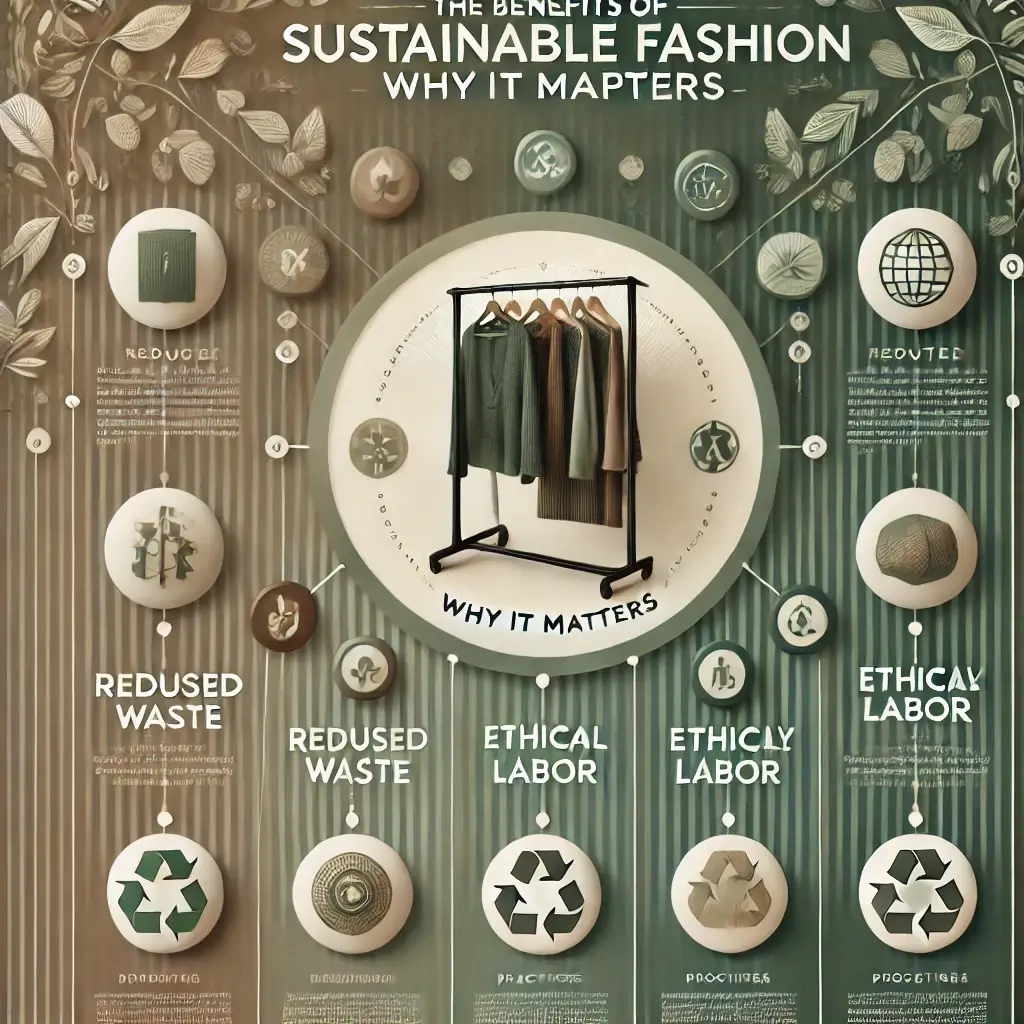-
How Digital Nomads Are Redefining Work and Lifestyle 🌍💻
Mar 06, 2025 | 51 Comments -
How Artificial Intelligence is Transforming Healthcare 🏥🤖
Mar 06, 2025 | 0 Comments -
How Cryptocurrency is Reshaping the Global Economy 💰🌍
Mar 06, 2025 | 0 Comments -
How to Build a Strong Personal Brand: Stand Out & Grow Your Influence 🚀📢
Mar 02, 2025 | 0 Comments -
The Power of AI in Business: How Artificial Intelligence is Transforming Industries 🚀🤖
Mar 02, 2025 | 0 Comments -
How Smart Homes Are Changing the Way We Live 🏡🔋
Mar 02, 2025 | 0 Comments -
How Electric Vehicles Are Revolutionizing Transportation 🚗⚡
Mar 02, 2025 | 0 Comments -
The Future of Renewable Energy: How Green Technology is Changing the World 🌍⚡
Mar 02, 2025 | 0 Comments

The Benefits of Sustainable Fashion: Why It Matters
The fashion industry is one of the largest contributors to environmental pollution and social inequities. As awareness of these issues grows, sustainable fashion has emerged as a solution that prioritizes environmental preservation and ethical practices. This article explores the benefits of sustainable fashion, its impact on the planet, and why it is essential for the future of the industry.
What is Sustainable Fashion?
Sustainable fashion refers to clothing, accessories, and footwear that are produced in ways that minimize harm to the environment and promote ethical labor practices. It emphasizes using eco-friendly materials, reducing waste, and ensuring fair treatment of workers throughout the supply chain.
Unlike fast fashion, which prioritizes low costs and quick turnover, sustainable fashion focuses on quality, durability, and responsible consumption.
Environmental Benefits of Sustainable Fashion
One of the primary drivers of sustainable fashion is its positive impact on the environment. Here are some ways it benefits the planet:
- Reduction in Waste: Sustainable fashion promotes a circular economy by encouraging recycling, upcycling, and the use of biodegradable materials, significantly reducing textile waste in landfills.
- Lower Carbon Footprint: Many sustainable brands use renewable energy sources and eco-friendly production methods to reduce greenhouse gas emissions.
- Conservation of Resources: Eco-conscious practices, such as using organic cotton and recycled materials, minimize water and energy usage in the production process.
- Reduction of Chemical Pollution: Avoiding harmful dyes and chemicals ensures cleaner waterways and healthier ecosystems.
Social and Ethical Benefits
Sustainable fashion is not only about protecting the environment but also about promoting social justice. Key ethical benefits include:
- Fair Labor Practices: Sustainable brands often ensure that workers are paid fair wages and provided with safe working conditions.
- Support for Local Communities: Many sustainable brands partner with artisans and small businesses, preserving traditional crafts and supporting local economies.
- Transparency in Supply Chains: Ethical brands prioritize transparency, allowing consumers to understand where and how their clothes are made.
Economic Benefits of Sustainable Fashion
While sustainable fashion may have higher upfront costs, it offers long-term economic benefits for consumers and businesses:
- Durable Clothing: High-quality, sustainable clothing lasts longer, reducing the need for frequent replacements and saving money over time.
- Resale and Rental Opportunities: The rise of second-hand and rental markets provides consumers with affordable access to sustainable fashion while extending the lifespan of garments.
- Innovative Business Models: Sustainable fashion fosters innovation, encouraging businesses to adopt eco-friendly practices and attract conscious consumers.
Challenges in Adopting Sustainable Fashion
Despite its benefits, sustainable fashion faces several challenges that hinder widespread adoption:
- Higher Costs: Ethical and eco-friendly materials often come with higher production costs, making sustainable fashion less accessible to some consumers.
- Lack of Awareness: Many consumers are unaware of the environmental and social impacts of fast fashion, limiting demand for sustainable alternatives.
- Greenwashing: Some brands falsely market themselves as sustainable, making it difficult for consumers to identify genuinely ethical options.
How to Embrace Sustainable Fashion
Adopting sustainable fashion doesn’t have to be overwhelming. Here are some practical steps to incorporate it into your lifestyle:
1. Buy Less, Choose Wisely
Focus on quality over quantity by investing in timeless, durable pieces that align with your style. Avoid impulse purchases and prioritize versatile garments that can be worn in multiple ways.
2. Support Sustainable Brands
Choose brands that are transparent about their materials, production methods, and labor practices. Look for certifications like Fair Trade, GOTS (Global Organic Textile Standard), or B Corp to ensure ethical practices.
3. Embrace Second-Hand Shopping
Thrift stores, vintage shops, and online platforms like Depop and ThredUp offer affordable and eco-friendly alternatives to buying new clothes.
4. Take Care of Your Clothes
Extend the lifespan of your garments by following proper care instructions, repairing damaged items, and repurposing old clothes instead of discarding them.
5. Rent or Swap Clothing
For special occasions, consider renting outfits instead of buying them. Clothing swaps with friends or community events are also great ways to refresh your wardrobe without contributing to waste.
0 comments
No comments yet. Be the first to comment!
Your comment